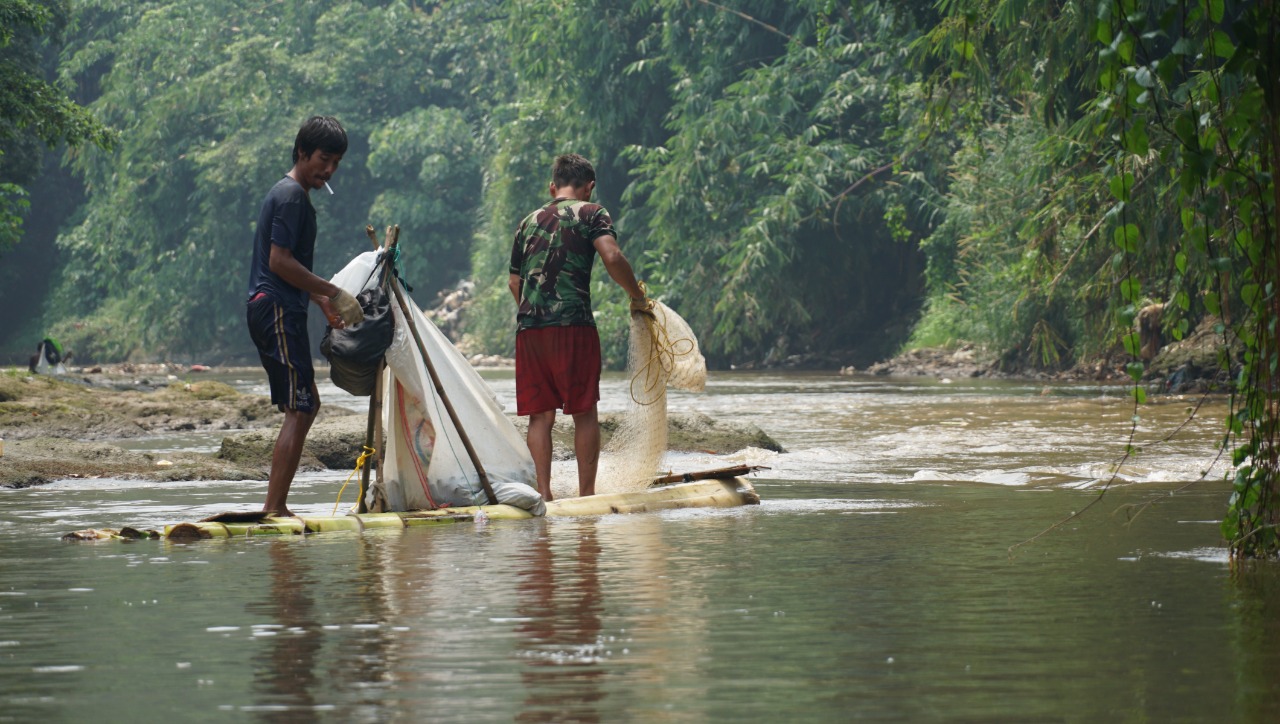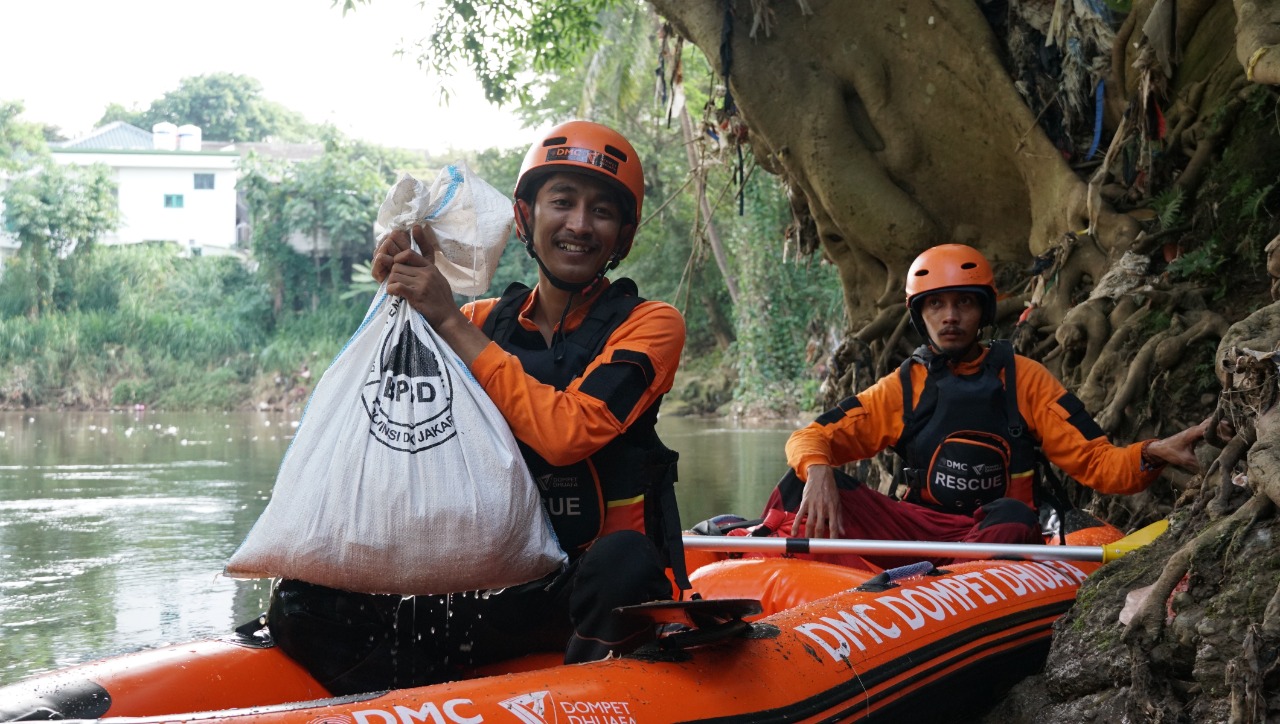JAKARTA — Entering the rainy season and the rampant flood disasters, Indonesia is now in a flood emergency period. On Friday (21/10/2022), the Meteorology, Climatology, and Geophysics Agency (BMKG) issued a statement ready to stand by until 2023. BMKG sees through its 2023 Climate Outlook 2023 report that throughout 2023, climate disturbances from the Pacific Ocean, namely ENSO, are expected to be in the Neutral phase, no La Nina is a trigger for wet climate anomalies or El Niño which is a trigger for dry climate anomalies.
However, due to the complex and unstable or dynamic atmospheric conditions and their interaction with the oceans in the Indonesian archipelago, the Head of BMKG Dwikorita Karnawati still cautions all parties to prepare for hydrometeorological disasters due to the high annual rainfall in 2023. This is estimated to exceed the average or its standard limit in parts of Indonesia, and even need to be vigilant and alert to the increasing potential for drought and forest and land fires in some vulnerable areas.
“Ministries/Agencies, Local Governments, communities, and all relevant parties must immediately carry out mitigation and anticipatory steps against the potential annual rainfall amount in 2023 that is predicted to exceed the average, which can trigger wet hydrometeorological disasters such as floods, flash floods, and landslides. All need to be on standby and alert,” said Dwikorita Karnawati.

In one study entitled Flood Exposure and Poverty in 188 Countries (2022), it was found that countries in the Asian region are the most vulnerable to flood disaster risk. Starting from the top of population countries threatened by floods are China (394.8 million people), India (389.8 million people), Bangladesh (94.4 million people), Indonesia (75.7 million people), Pakistan (71.8 million people), Vietnam (45.5 million people), USA (42.6 million people), Nigeria (39 million people), Egypt (38.9 million people), and Japan (36.1 million people).
The threat of being affected by floods is most common in developing countries, as low/poor and middle-income countries are home to 89% of the world’s population affected by flooding. Globally, 170 million to 780 million people are exposed to the threat of flooding while living in poverty.
History has proven that flooding has a long-term impact on low-income communities. Low-quality buildings and assets will suffer high damage and destruction in communities with low-income residents or poor people. Inadequate spatial planning and drainage infrastructure exacerbate this level of disaster threat. In addition, the widespread lack of formal banking has resulted in people being unable to utilize liquid savings or affordable credit to cope with and restore post-disaster life.

One of the partners of the Disaster Management Center (DMC) of Dompet Dhuafa, Ahmad Maulana “Lantur” as the Chairman of the Ciliwung Condet Padepokan East Jakarta, shared his experience in managing the base (pier) around the Ciliwung River which is a subscription to the flood disaster. The floods that hit several settlements around the Ciliwung River became a shared responsibility that was difficult to resolve. According to him, the problem related to disaster management is to make the community resilient to disasters.
“The most crucial issue is the settlements in the watershed (watershed). That adds to the big problem besides the flooding, whose tensions can no longer be recalculated. This means that the problem of flooding in the community is getting wider, more and more and the improvement is not commensurate with the needs intended for the watershed,” He explained on Friday (21/10/2022).
Various parties, including policymakers, have tried to fix the problem of flooding around settlements near the Ciliwung River. However, for some parties, these efforts are not appropriate and have no paradigm of sustainability.
“Never look again at (efforts) what is intended for the watershed, for example with what width the river is, what it should be like, and finally the problem is solved with one thing that is not environmentally friendly. This means by concreting and building an inspection road,” continued Lantur.
Although, indeed Jakarta is less than 20 percent for Green Open Space (RTH). The designation should be for the RTH of the water catchment area, and at the time of the flood, it was a water parking space. As time passed, Padepokan Ciliwung Condet was disappointed. So what is done is different from the intention of the implementation.
“We are worried about the state of the river such as flooding and garbage,” he continued.
Through the cooperative relationship established between communities in the Ciliwung River bases such as Saung Bambon Riverside (Srengseng Sawah), KPC Kedung Sahong (Lenteng Agung), Ciwilung Muara Bersama – CMB (Tanjung Barat), Padepokan Ciliwung Condet – PCC (Balekambang), and Kometa (Balekambang), they are trying to carry out a series of disaster management in the Ciliwung watershed area.
“We like working with DMC Dompet Dhuafa to clean up rivers and others. Furthermore, in 2019 we begin to plan strategic steps for the improvement and existence of rivers and communities. With the concept of a tourist destination called Betawi Smart Park,” he said.

“So indeed, some of our bank points have been turned into productive land points to become tourist destinations, conservation and economic empowerment throughout the community around the Ciliwung River,” concluded Lantur.
A breath of fresh air emerged when these communities were entrusted with the area now known as Ciliwung Muara Bersama. The place was assigned to them by the government to become a conservation land.
“Give the trust to manage the land into a conservation area. Alhamdulillah, it became the economic activity of the community. And also, to this day, it is one of the evacuation places from flood disasters such as evacuation,” he admitted.
In addition, there is also cultural-based economic empowerment available at the base. Starting from archery, fish farming and others. “Alhamdulillah, until now, it has been running for a year,” explained Lantur.
According to him, each party’s collaborative efforts are strategic keys to flood disaster management there. “In short, we’re saying a specific strategy: flooding is not just a waste problem, but evacuation and relief logic. But there’s something that’s the most core of the movement is the community’s resilience to see the flooding itself,”
“Development is so massive that it no longer refers to the interests of the river and its nature which in the end floods yes floods, damaged yes damaged. Countermeasures never happened,” he said.

He continued that the community’s ability to respond resiliently to flood disasters is essential. So that even though a flood disaster occurs, the community can adapt well, swiftly, and well-established.
“How do they become a resilient community to deal with floods because the floods in Jakarta can no longer be avoided. This means that inevitably we have to synergize to develop these areas. At least we are still flooded, but we make the area a catchment so that Jakarta’s central area does not flood even more violently,” Lantur concluded.
With the cooperation established between each community and DMC Dompet Dhuafa, they have constructed and renovated terraced trabs, base docks, MCK sanitation facilities, and reading parks. In addition, DMC Dompet Dhuafa through community support was able to hold flood preparedness training, handle light fire suppression, and plant trees around the banks of the Ciliwung River.
“We hope that the Disaster Response Area in the Ciliwung River communities will be able to become a disaster response village community. Become an extension cadre for other surrounding villages. Able to become an educational and independent integrated area,” explained Haryo Mojopahit as Chief Executive of DMC Dompet Dhuafa.
The Disaster Response Area Program aims to restore the function of the Ciliwung River through a community empowerment approach in structuring the Ciliwung watershed area. It also takes an approach based on environmental, cultural, and economic perspectives, reducing vulnerability and building community resilience in the affected areas.
It is also hoped that the Disaster Response Area will become an ecotourism project on the banks of the Ciliwung river by empowering local heroes. Focusing on local heroes to build a sustainable development approach to restore the function of the Ciliwung watershed in Jakarta.
A total of 33 sub-districts located along the Ciliwung stream or equivalent to 3.3 million people, will benefit indirectly (awareness) from literacy strengthening programs in several assisted communities, both actors and beneficiaries of this program.
“Collaboration, this program started from the community’s own initiative, Dompet Dhuafa took the initiative to facilitate this innovative solution through collaboration with other partners,” explained Haryo.
“The process of establishing a Disaster Response Area is inseparable from the role of key actors at the forefront of developing their own communities. This figure is the main factor in the success of implementing key sustainability programs and developing intervention areas,” said Haryo.
Furthermore, DMC Dompet Dhuafa and the communities around the Ciliwung Riverbank will procure an Early Warning System (EWS) in the form of radio communication equipment between bases, water level measuring instruments, and river patrol boats.
Then it will also install domestic wastewater treatment plants, plant breeding centers (endemic and buffer) in the form of salak condet, bamboo petung, duku condet, and composters. The economic sector will carry out community economic development by adding fish pond installations and providing fish seeds.



